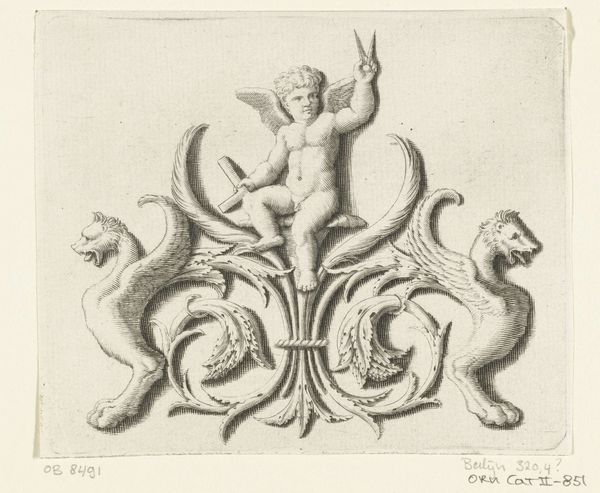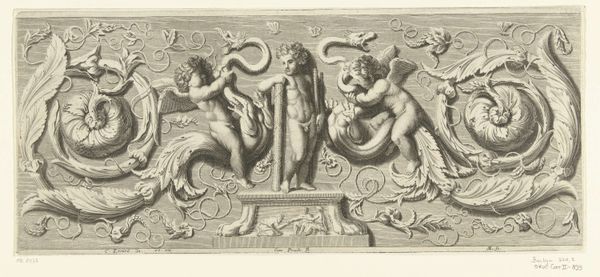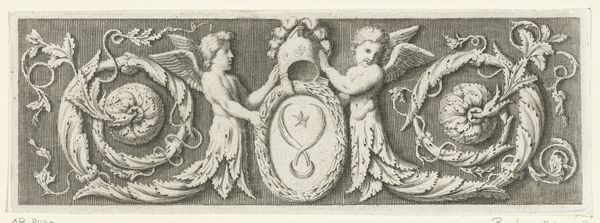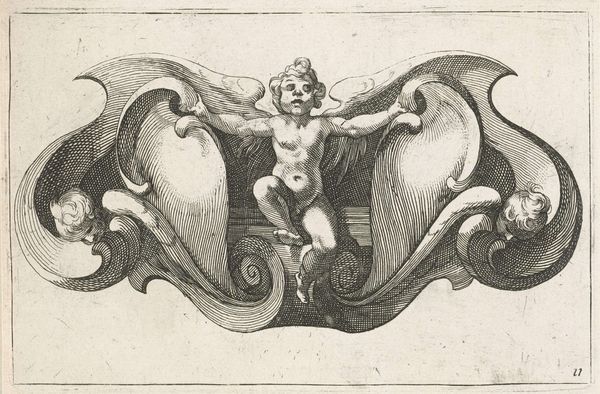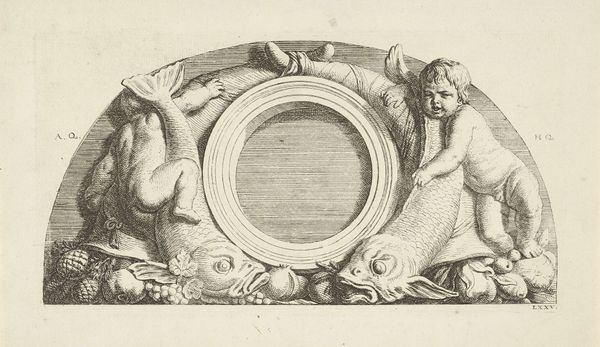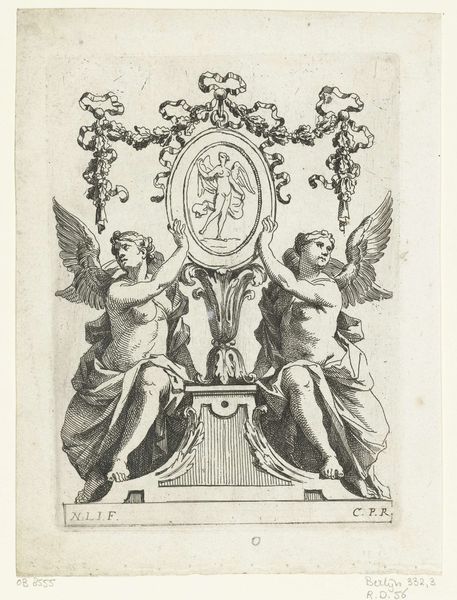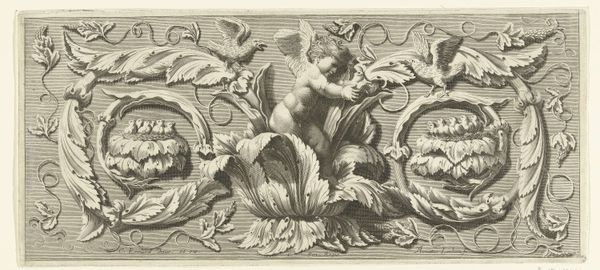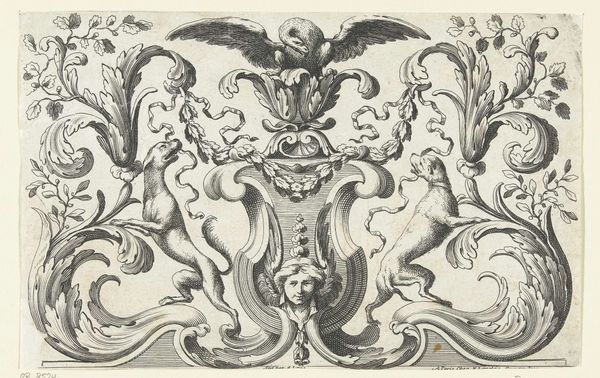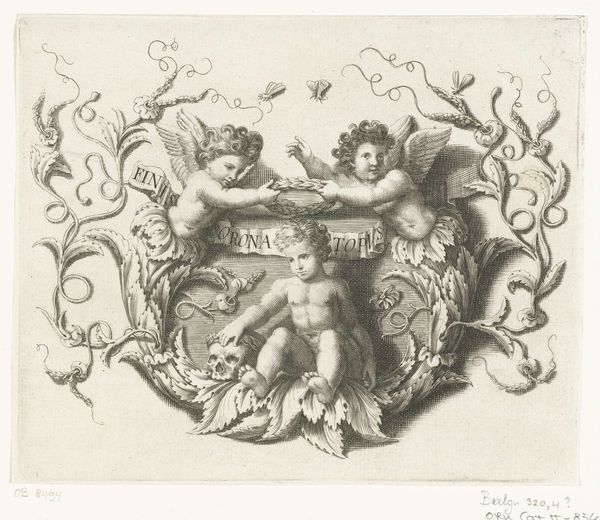
drawing, ink, engraving
#
drawing
#
baroque
#
pen drawing
#
figuration
#
ink
#
engraving
Dimensions: height 87 mm, width 132 mm
Copyright: Rijks Museum: Open Domain
Editor: Here we have an engraving titled "Putto met twee boeketten en onderlijf van bladranken," which translates to "Putto with two bouquets and lower body of leafy tendrils," created before 1689 by an anonymous artist. The crisp lines and symmetrical composition give it a formal, decorative feel. What's your take on this Baroque piece? Curator: Well, considering its probable function as a design for ornament, we should explore its role in reflecting the grandeur and aspirations of the era. The putto, a cherubic figure, blends classical imagery with Christian iconography, a prevalent trend in Baroque art. Its very existence speaks to power structures! How do you interpret the leafy tendrils combined with the cherubic figure? Editor: They seem to give the piece an interesting duality, like a blend of innocence with ornate, almost excessive decoration. Do you think the engraving process itself had an impact on the overall aesthetic, considering the context of dissemination? Curator: Absolutely. Engravings allowed for the widespread distribution of designs, influencing architecture, furniture, and even garden design across Europe. Think of the print not just as an image, but as a blueprint for disseminating very specific cultural values. The artist's choice to render the putto and foliage with such precision speaks to the desire for standardized elegance. Did this system democratize aesthetics or reinforce existing hierarchies? Editor: That’s a great point! So, in a way, this engraving acted as a form of cultural control? This puts a very interesting, critical spin on what initially just appeared decorative. Curator: Exactly! By understanding the print’s circulation and its impact on design, we start seeing it not just as a pretty picture, but as a historical document that helped spread, negotiate, and solidify certain aesthetic tastes and ultimately reinforce existing societal norms and hierarchies of the Baroque era. Editor: Wow, that really reframes my understanding. I'll definitely consider that socio-political lens when looking at similar pieces going forward. Thanks for shedding light on that.
Comments
No comments
Be the first to comment and join the conversation on the ultimate creative platform.

